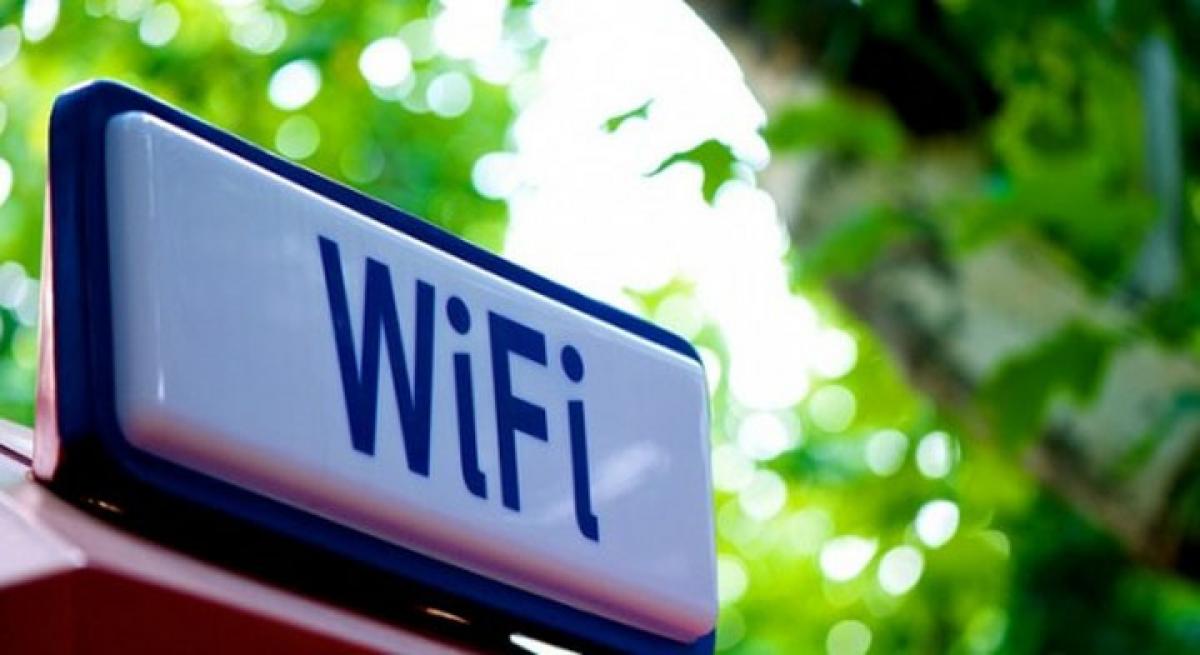Live
- Tight security arrangements at Group-II examination centers District SP
- Alia Bhatt captures attention in white
- Varun Dhawan talks about ‘Baby John’
- ‘Moonwalk’ trailer promises a quirky heist, love, and loyalty
- Combat leaf spot disease
- Ahsaas Channaopens up about her complex character in ‘Mismatched 3’
- Radhika Apte welcomes first child, shares heartfelt post
- Jacqueline dazzles at Da-Bangg Reloaded concert
- Time to boost measures to prevent drowning, save children: WHO
- TDP achieves milestone with 73 lakhs membership registration, says Chandrababu
Just In

x
Highlights
An Indian-origin team of engineers from the University of Washington has developed a novel technology that uses a Wi-Fi router to power devices at home and beyond.
An Indian-origin team of engineers from the University of Washington has developed a novel technology that uses a Wi-Fi router to power devices at home and beyond.

Developed by assistant professor Shyam Gollakota and Vamsi Talla, an electrical engineering doctoral student, the Power Over Wi-Fi (PoWiFi) system is one of the most innovative and game-changing technologies of the year, said Popular Science that included it in the prestigious magazine's annual "Best of What's New" awards announced on November 18.
"For the first time we have shown that you can use Wi-Fi devices to power the sensors in cameras and other devices," lead author Talla said.
"We also made a system that can co-exist as a Wi-Fi router and a power source -- it doesn't degrade the quality of your Wi-Fi signals while it's powering devices," she added.
The technology attracted attention earlier this year when the team published an online paper showing how they harvested energy from Wi-Fi signals to power a simple temperature sensor, a low-resolution grayscale camera and a charger for a Jawbone activity tracking bracelet.
PoWiFi could help enable development of the Internet of Things, where small computing sensors are embedded in everyday objects like cell phones, coffee makers, washing machines, air conditioners and mobile devices - allowing those devices to "talk" to each other.
"In the future, PoWiFi could leverage technology power scaling to further improve the efficiency of the system to enable operation at larger distances and power numerous more sensors and applications," explained Gollakota, assistant professor of computer science and engineering.
But one major challenge is how to energise those low-power sensors and actuators without needing to plug them into a power source as they become smaller and more numerous.
The team fixed that problem by optimising a router to send out superfluous "power packets" on Wi-Fi channels not currently in use -- essentially beefing up the Wi-Fi signal for power delivery -- without affecting the quality and speed of data transmission.
The team also developed sensors that can be integrated in devices to harvest the power.
In their proof-of-concept experiments, the team demonstrated that the PoWiFi system could wirelessly power a grayscale, low-power Omnivision VGA camera from 17 feet away, allowing it to store enough energy to capture an image every 35 minutes.
It also re-charged the battery of a Jawbone Up24 wearable fitness tracker from zero to 41 percent in 2.5 hours.
The researchers also tested the PoWiFi system in six homes.
"Users did not notice deterioration in web page loading or video streaming experiences, showing the technology could successfully deliver power via Wi-Fi in real-world conditions without degrading network performance," the authors noted.
The duo will present the final paper next month at the Association for Computing Machinery's CoNEXT 2015 conference in Heidelberg, Germany.

Next Story
More Stories
ADVERTISEMENT
© 2024 Hyderabad Media House Limited/The Hans India. All rights reserved. Powered by hocalwire.com







